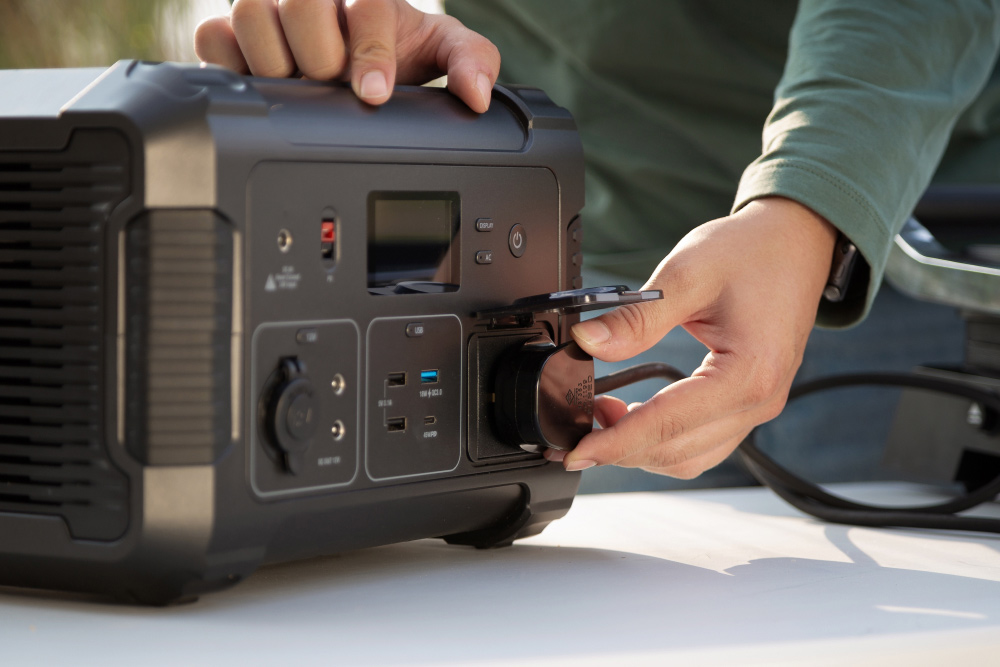Key Things To Consider Before Buying Portable Power Stations
Portable power stations are practical investment alternatives for individuals who require reliable electricity beyond the grid. A standard power bank may be useful for small electronic devices like smartphones and speakers. Still, it may not possess enough power to charge devices such as mini refrigerators, drills, saws, projectors, blenders, and drones. A portable power station, which consists of high-capacity battery packages in a compact and travel-friendly design, helps charge such large mobile devices.
This convenience, combined with their high energy output, makes portable power stations a useful ally during outdoor adventures, travelling, and mobile living.

Average cost range of portable power stations
As is the case with most high-utility devices, portable power stations come in multiple categories and price points. High-end models from popular manufacturers and portable power stations offering several features are costlier than other alternatives. On average, the cost range goes from as low as £320 to £1,400 and beyond. The final price of certain power stations can be even more expensive based on specific aspects, including the product’s popularity, additional features, brand name, and available ports.
Factors to consider before purchasing portable power stations
1. Capacity
The capacity of a power station is measured in watt-hours (Wh). This parameter dictates how long a power station can operate or how many times it can charge a device. A 200Wh power station possesses enough power to charge a phone about 12 times, while a larger 800Wh power station will be capable of recharging the same phone 62 times. A higher Wh rating translates into better energy storage and delivery.
People who spend much time outdoors can buy power stations with larger capacities. Since such power stations can be expensive, buyers with minimal charging requirements can opt for smaller-capacity portable power stations to save money.
2. Battery technology
A portable power station generally comprises four main components—batteries, inverters, charge controllers, and fans. As batteries are the most vital element of a portable power station, people need to check the technology or type of battery the device includes, as these factors heavily influence the device’s size, weight, charging speed, cost, power supply, and longevity. Experts often recommend batteries based on lithium iron phosphate (LiFePO4) due to their high thermal stability, low weight, good energy density, relatively high environmental sustainability, efficiency, and high life cycle. Essentially, these batteries offer adequate power for long hours without exponentially increasing a user’s carbon footprint.
3. Power output
This factor influences the number and type of devices a portable power station can charge quickly and successfully. Power stations with higher output allow multiple gadgets to be plugged in simultaneously and supply enough energy to run appliances that need more juice. Ideally, one must purchase power stations with the highest power output, which enables them to charge their air conditioners, blow dryers, and space heaters while maintaining their requisite high levels of functionality.
4. Power input
Most power stations can be charged by plugging them into a 120V AC wall socket at home, solar panels, or a 12V DC port in automobiles. Usually, it takes the longest for portable power stations to charge in vehicles and the shortest amount of time to power up through wall outlets. One must purchase power stations with multiple power input ports and faster charging options to streamline the task of charging them flexibly.
5. Price
Expensive portable power stations come with several unique features. Still, not all users may require such devices. Certain buyers may require devices only to charge a handful of devices. Such individuals can invest in budget-friendly devices available on the market.
Apart from these, there are several other factors to consider before putting down one’s money in a portable power station, including portability, maintenance, emissions, and average runtime.
Portable power station benefits
1. Emergency power source
Whether travelling for work or leisure, it can be annoying for individuals when their critical electronic devices run out of power. During power cuts, natural disasters, or emergencies, one tends to rely more on such devices. A portable power station offers a solution by quickly charging these devices to restore functionality during such tense scenarios.
2. Renewable, clean energy
Most modern portable power stations produce energy with a high degree of environmental sustainability. Many portable power stations are rechargeable using solar panels, eliminating the reliance on fossil fuels. The green credentials of such devices make them particularly useful in reducing users’ carbon footprint and contributing to a cleaner environment.
3. Convenience during outdoor adventures
It is easy to carry portable power stations in one’s backpack or vehicle’s boot. Their portability and high energy distribution make them a necessity in today’s digitized ecosystem, where most smart devices are energy-hungry. Such devices suit rough outdoor conditions and make mobile living simpler and more tension-free for individuals who often indulge in activities like camping, hiking, or RV travel.
Portable power station companies
Some of the renowned portable power station producers in the country include Jackery, Anker, EcoFlow, and Bluetti. These brands are known for their reliable, powerful, and sustainable devices that can charge multiple devices simultaneously and quickly.




